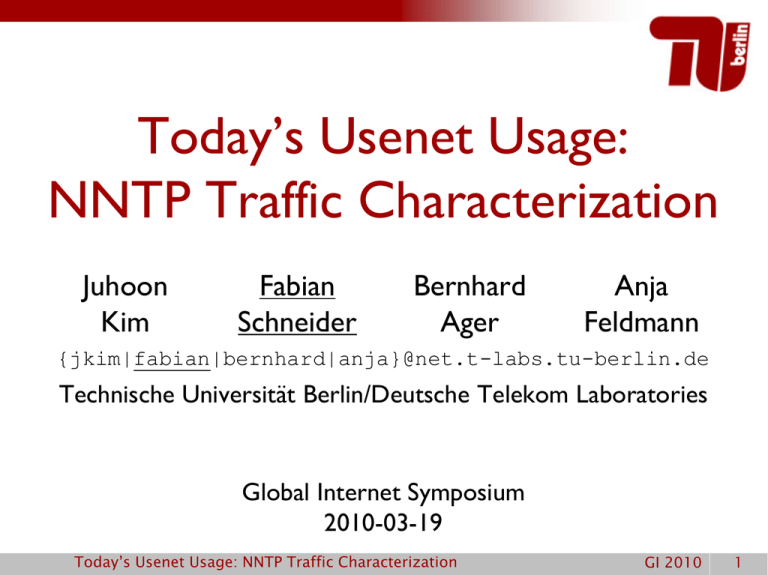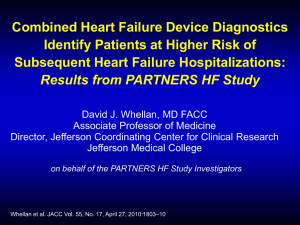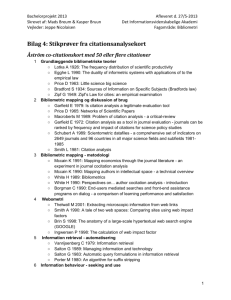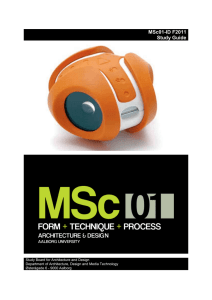IEEE Communications Society Internet Technical Committee
advertisement

Today’s Usenet Usage:
NNTP Traffic Characterization
Juhoon
Kim
Fabian
Schneider
Bernhard
Ager
Anja
Feldmann
{jkim|fabian|bernhard|anja}@net.t-labs.tu-berlin.de
Technische Universität Berlin/Deutsche Telekom Laboratories
Global Internet Symposium
2010-03-19
Today’s Usenet Usage: NNTP Traffic Characterization
GI 2010 1
1
Motivation
Motivation
Maier et al. [IMC’09] report a fraction of up to 5% of
the total traffic in a residential broadband access
network being transferred via NNTP
q But our expectation was:
q
o NNTP is almost dead
o Only used by Internet-Oldies
Data shows only a small number of DSL lines using
NNTP (<2%)
q Why so much NNTP traffic?
q
[IMC’09] G. Maier, A. Feldmann, V. Paxson and M. Allman, “On dominant characteristics
of residential broadband Internet traffic”, in Proceedings of Internet Measurement
Conference 2009
Today’s Usenet Usage: NNTP Traffic Characterization
GI 2010
2
Outline
Outline
q Motivation
q Refresher
on NNTP
q Methodology
q Data Sets
q Evaluation Results
q Summary
Today’s Usenet Usage: NNTP Traffic Characterization
GI 2010
3
Refresher on NNTP
Refresher on NNTP
Protocol of the Usenet
q Today: Usenet features provided by Forums or Mailing
lists, integrated into Blogs and OSNs
q Features:
q
o
o
o
o
Post and read/download articles
Hierarchy of newsgroups to structure content
Articles similar to emails (same message format)
Request article by
• Newsgroup & article number or
• Globally unique Message-ID (newsgroup independent)
o Limited Storage: Remove old articles as new ones arrive
Today’s Usenet Usage: NNTP Traffic Characterization
GI 2010
4
Methodology
Methodology
q
Developed NNTP analyzer for Bro NIDS:
o
o
o
o
o
Detects NNTP traffic on any port
Identifies/logs NNTP commands
Handles single- and multi-line requests
Identifies/logs binary encoding method
Determines content type based on filename
Run analyzer on anonymized packet traces
q Run analyzer live logging only anonymized summaries
q
q
Focus on clientóserver communication
Today’s Usenet Usage: NNTP Traffic Characterization
GI 2010
5
Data Sets
Data Sets
q
Same vantage point as Maier et al [IMC’09]
o Monitoring residential DSL connections at large ISP in EU
o 3 anonymized packet level traces (24h/48h each)
o 1 anonymized log summary covering >15 days
Name
Start date
Duration Size
NNTP
NNTP-15d
Wed 5 Aug’09 3am
15¼ d
n/a
n/a
SEP08
Thu 18 Sep’08 4am
24 h
> 4 TB
5%
APR09
Wed 01 Apr’09 2am
24 h
> 4 TB
2%
Fri 21 Aug’09 2am
48 h
> 11 TB
2%
AUG09
Today’s Usenet Usage: NNTP Traffic Characterization
GI 2010
6
Outline
Outline
q Reminder
on NNTP
q Methodology
q Data Sets
q Evaluation Results
o Text vs. encoded binaries
o Popular Content types
o Identification of NNTP servers
o Additional Observations
o Throughput analysis
q Summary
Today’s Usenet Usage: NNTP Traffic Characterization
GI 2010
7
Evaluation Results
Text vs. Encoded Binaries
99% of volume is binary encoded with yEnc
non-binary
yEnc
UUEnc
MIME
NNTP-15d
Aug 09
Apr 09
Sep 08
0%
20%
40%
60%
Fraction of Requests
Today’s Usenet Usage: NNTP Traffic Characterization
80%
100%
GI 2010
8
Evaluation Results
Popular Content Types
archive/rar
archive/par2
video/avi
audio/mp3
image/jpg
Other
NNTP-15d
Aug 09
Apr 09
Sep 08
0%
20%
40%
60%
Fraction of Requests
80%
100%
q More
than 80% are RAR archives
q Multimedia types also popular (.avi, .jpg, .mp3)
Today’s Usenet Usage: NNTP Traffic Characterization
GI 2010
9
Evaluation Results
Popular Content Types
Similar to content types
of file-sharing services like:
• One-Click Hosters, e.g. Rapidshare
• P2P networks, e.g. BitTorrent
q More
than 80% are RAR archives
q Multimedia types also popular (.avi, .jpg, .mp3)
Today’s Usenet Usage: NNTP Traffic Characterization
GI 2010
10
Evaluation Results
Identification of NNTP Servers
Findings so far:
Mostly binary and file-sharing content
q Binary content on public NNTP servers
Æ Not allowed or very short retention times
q
q
Which servers provide this content?
ÆBinary groups are hosted on commercial servers,
requiring a monthly fee to access them:
o Serve >99% of the volume (93% of the requests)
o Feature search function to locate content
Today’s Usenet Usage: NNTP Traffic Characterization
GI 2010
11
Evaluation Results
Additional Observations
Multiple NNTP connections in parallel
q Most queries via globally unique Message-ID
q High frequency of BODY command
q Low frequency of GROUP command
q
ÆLikely explanation:
Specialized clients of
commercial NNTP offers
o Provide shiny GUIs
(e.g. via a local Web server)
o Specialized for file download
Today’s Usenet Usage: NNTP Traffic Characterization
GI 2010
12
Evaluation Results
Throughput of File-sharing Offers
P2P protocols
significantly lower
throughput
q NNTP more
pronounced peak
than HTTP
q
Throughput of flows >50kB, download direction only
Today’s Usenet Usage: NNTP Traffic Characterization
GI 2010
13
Summary
Summary
Almost all of the volume (>99%) is binary data
q NNTP carries similar content as file-sharing services
q 99% of the volume is exchanged with commercial NNTP
servers that require a monthly fee to access them
q Client/server protocols achieve an order of magnitude
higher throughput than P2P
q
ÆNNTP is used as a commercial, high
performance alternative to file-sharing services
Today’s Usenet Usage: NNTP Traffic Characterization
GI 2010
14
Questions?
Today’s Usenet Usage: NNTP Traffic Characterization
GI 2010
15
Backup Slides
q NNTP
command distribution
o Frequency of commands
o Volume of commands
q Transaction
Volumes
Today’s Usenet Usage: NNTP Traffic Characterization
GI 2010
16
Evaluation Results
Command Frequency
Command
82.6 %
83.2 %
66.5 %
NNTP15d
76.5 %
BODY
8.1 %
10.3 %
27.1 %
18.1 %
GROUP
0.9 %
1.1 %
0.4 %
0.6 %
HEAD
4.1 %
<0.1 %
<0.1 %
0.6 %
AUTHINFO
1.8 %
2.3 %
2.0 %
1.8 %
QUIT
0.2 %
0.7 %
0.2 %
0.2 %
ARTICLE
SEP08
APR09
Today’s Usenet Usage: NNTP Traffic Characterization
AUG09
GI 2010
17
Evaluation Results
Command Frequency
In terms of volume:
ARTICLE and BODY
together contribute more than 99%!
Today’s Usenet Usage: NNTP Traffic Characterization
GI 2010
18
Evaluation Results
Transaction Volumes
q
Today’s Usenet Usage: NNTP Traffic Characterization
We observe two
common transaction
sizes:
o 252 kB and 387 kB,
o likely due to file
partitioning
GI 2010
19




